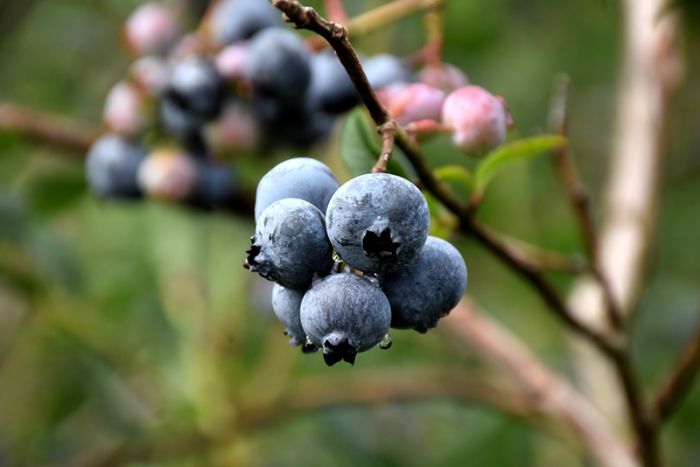Vaccinium, Highbush Blueberry 'Chandler'



Out of stock
- Sun Preference
- Full-Sun, Part-Sun
Description
A mid to late season variety with extremely large berries. Good flavored berries shine for fresh eating.
Minnesota's Largest Selection of Shrubs
Elevate your landscaping with Gertens' unmatched variety of shrubs! Selecting the right shrubs for your backyard can enhance its beauty and functionality. Consider factors like sunlight, soil type, and mature size when choosing shrubs. For sunny areas, flowering shrubs like roses or hydrangeas can add color and charm. In shady spots, opt for shrubs like azaleas or hostas. Evergreen shrubs provide year-round interest and privacy, while deciduous shrubs offer seasonal color changes. At Gertens, we offer a wide selection of shrubs to suit every backyard need.
Details
Chandler Blueberry | Vaccinium corymbosum 'Chandler'
Height: 6 feet
Spread: 6 feet
Sunlight: full sun to part shade
Hardiness Zone: 5b
Group/Class: Highbush Blueberry
Brand: Gertens
Description:
A prolific fruit set of large, super sweet berries and attractive foliage; bushy and compact with a lovely red fall color; blueberries need highly acidic soil, perfect drainage and mulch; plant with peat moss; less hardy than most cultivars
Edible Qualities
Chandler Blueberry is a medium-sized shrub that is typically grown for its edible qualities. It produces large clusters of blue round berries which are usually ready for picking from mid to late summer. The berries have a sweet taste and a juicy texture.
The berries are most often used in the following ways:
- Fresh Eating
- Cooking
- Baking
- Preserves
Features & Attributes
Chandler Blueberry features dainty clusters of white bell-shaped flowers hanging below the branches in mid spring. It has bluish-green deciduous foliage. The oval leaves turn an outstanding red in the fall. It features an abundance of magnificent blue berries from mid to late summer. The smooth tan bark adds an interesting dimension to the landscape.
This is a multi-stemmed deciduous shrub with an upright spreading habit of growth. Its average texture blends into the landscape, but can be balanced by one or two finer or coarser trees or shrubs for an effective composition. This is a relatively low maintenance plant, and usually looks its best without pruning, although it will tolerate pruning. It is a good choice for attracting birds to your yard. It has no significant negative characteristics.
Aside from its primary use as an edible, Chandler Blueberry is sutiable for the following landscape applications;
- General Garden Use
- Orchard/Edible Landscaping
Planting & Growing
Chandler Blueberry will grow to be about 6 feet tall at maturity, with a spread of 6 feet. It tends to be a little leggy, with a typical clearance of 1 foot from the ground, and is suitable for planting under power lines. It grows at a medium rate, and under ideal conditions can be expected to live for approximately 30 years. This variety requires a different selection of the same species growing nearby in order to set fruit.
This shrub is typically grown in a designated area of the yard because of its mature size and spread. It does best in full sun to partial shade. It does best in average to evenly moist conditions, but will not tolerate standing water. It is very fussy about its soil conditions and must have sandy, acidic soils to ensure success, and is subject to chlorosis (yellowing) of the foliage in alkaline soils. It is quite intolerant of urban pollution, therefore inner city or urban streetside plantings are best avoided, and will benefit from being planted in a relatively sheltered location. Consider applying a thick mulch around the root zone in winter to protect it in exposed locations or colder microclimates. This is a selection of a native North American species.
More Information
| Gerten Grown Plants | Gerten Grown Plants |
|---|---|
| Available for Pre-Order | No |
| Sun Preference | Full-Sun, Part-Sun |
| Mature Height (Range) | 5 - 10 feet |
| USDA Hardiness Zone | 5 |
| Common Family Name | Blueberry |


